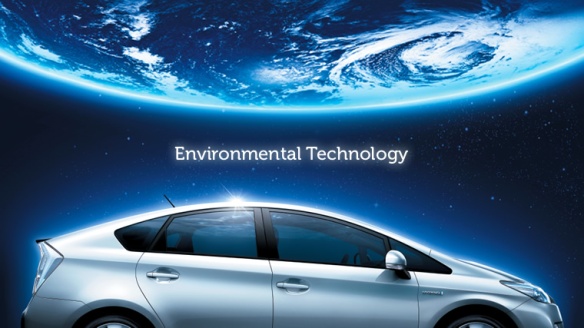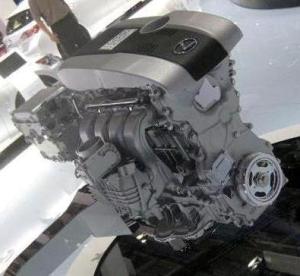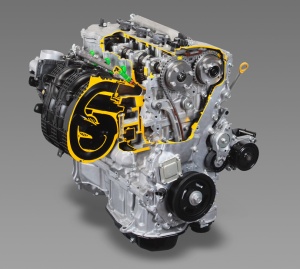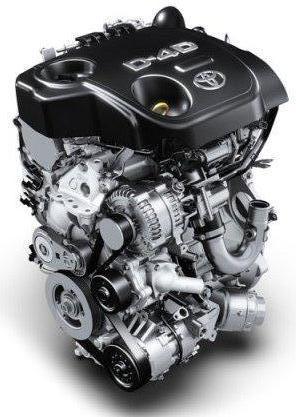 As the calendar turns from 2012 to 2013 and we look back at our previous predictions (some dating back to 2010) on what new or revised models Toyota, Scion and Lexus models were launched, we are reminded that Toyota is a company that is always Moving Forward, even though its new tagline is “Let’s Go Places”. Quite apropos, as buried in the 11 September 2012 news release announcing the new ad and communications tagline was a new round of product predictions. As Toyota Division group vice president and general manager Bill Fay noted,
As the calendar turns from 2012 to 2013 and we look back at our previous predictions (some dating back to 2010) on what new or revised models Toyota, Scion and Lexus models were launched, we are reminded that Toyota is a company that is always Moving Forward, even though its new tagline is “Let’s Go Places”. Quite apropos, as buried in the 11 September 2012 news release announcing the new ad and communications tagline was a new round of product predictions. As Toyota Division group vice president and general manager Bill Fay noted,
(We will unveil) seven, exciting all-new or updated Toyota and Scion vehicles in 2013
Longtime Kaizen Factor readers know that we take these proclamations as a challenge to come up with a precise list of the vehicles in question. A couple of things seem crystal-clear: Lexus is specifically excluded from this prediction (their 2013 calendar year new releases are expected to be the 3rd-generation IS sedans, the GX SUV’s mid-life facelift and the new, sub-RX crossover SUV line, the NX); and the fact that it was uttered by a Toyota USA official means no Japanese domestic market or Europe-only models are part of the 7.
Unlike our previous Informed Speculation articles, where we were mostly on our own as far as deducing what went on the lists, this time there is more internet chatter on what the precise models are, mostly via Mark Rechtin of Automotive News. At the 4th-generation Toyota Avalon press preview in early November, he chatted with Toyota U.S.A.’s vice president of marketing Jack Hollis, who revealed that
The Avalon…will be followed by redesigns of the Toyota RAV4 and Highlander crossovers, Tundra full-sized pickup and Corolla compact sedan. A midcycle update for the 4Runner also is planned…
The redesigned RAV4 is expected in the first quarter of 2013; the Highlander and Tundra are coming the second quarter, and the Corolla is scheduled to arrive in the third quarter…
In addition, Toyota’s Scion brand has its xB and xD hatchbacks scheduled for renewals, either as a redesign or an entirely new product category.
Without further ado, here are our predictions:
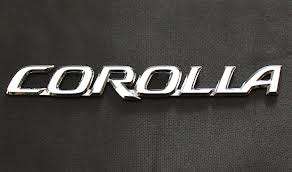 Toyota Corolla
Toyota Corolla
After the 11th-generation (E160) Corolla’s 2012 calendar year debut in Japan (in sedan, wagon and Auris hatchback guises), Europe and Oceania (Australia/New Zealand), North America patiently waits its turn. And it looks like we may have to wait a bit longer. Once touted as a shoo-in for a 2013 Detroit Auto Show unveiling, the announcement of the Monday 14 January 2013 debut of the Toyota Furia Concept at the show turned that notion on its head. The final scene (shot above right) of its pyromaniac’s delight teaser video shows the side profile of what appears to be a C-segment front-wheel-drive sedan such as the Corolla. And, indeed, there is near-unanimity among pundits (this author included) that Furia is a preview of the 2014 Corolla sedan for North America. Thus, we’d be surprised if the production version of the newest 11th-gen Corolla iteration is officially revealed any earlier than the 2013 New York Auto Show press conferences on Wednesday 27 and Thursday 28 March.
As with most if not all recent Toyota and Lexus new-generation launches, we expect the new Corolla to use a carryover engine from its predecessor, in this case the 2ZR-FE 1.8 liter, 4-cylinder engine. If Oceania’s new Corolla Hatchback (Auris) is anything to go by, it may receive a slight 4 hp bump, to 136. Transaxles, though, may be a different story. Again referencing Oceania and other markets that have seen the newest Corolla, the current woefully obsolete 5-speed manual and 4-speed automatic will, in all likelihood, be replaced by a 6-speed manual and a Multidrive CVT (Continuously Variable Transmission). Yes, it’s more likely than not that the Corolla will become the second non-hybrid (besides the Scion iQ) Toyota CVT application in North America. Whether any of them (such as a sporty Corolla model) will use the Multidrive S with 7-speed sport sequential manumatic mode and paddle shifters remains to be seen.
Speaking of sporty Corolla models, we hope the current tepid Corolla S model gives way to a proper Corolla SE that follows the lead of current Yaris, Camry and Sienna SE variants in going beyond the merely cosmetic and offering meaningful firmer suspension and steering tweaks. And what about a return of the Corolla XRS with the 2.5-liter, 4-cylinder 2AR-FE engine as a rival to the Honda Civic Si, Ford Focus ST and Volkswagen GTI? Don’t count on it, much as we’d like to see it. Another losing bet is on a third generation of the Toyota Matrix, as Toyota Division group vice president and general manager Bill Fay told Mark Rechtin of Automotive News, “If we don’t have the Matrix, it won’t be the end of the world.” Thus, it seems that the Toyota brand will join the Chevrolet Cruze, Dodge Dart, Honda Civic and Nissan Sentra in not offering a C-segment 5-door hatchback body style in the United States. No biggie, for the Scion brand will probably take up the slack. More baffling is Fay’s contention that the Matrix will continue to be available in Canada. Will the aging 2nd-generation E140 Matrix soldier on alongside the newer E160 Corolla sedan in the Great White North? Or might the Green Car Reports‘ John Voelcker be on to something when he suggests that the new E160 Auris might be imported into Canada as a Matrix replacement?
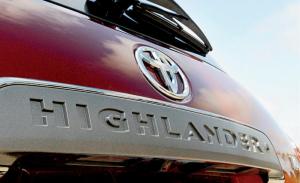 Toyota Highlander
Toyota Highlander
With Toyota’s Camry and Avalon and the Lexus ES having been renewed within the past year or so, it is now their K-platform Highlander sibling’s turn for a new generation. Although any growth spurt would probably be slight, at least the discontinuation of the V6 and 3rd-seat options from the North American RAV4 makes for much less overlap between the two. The 3.5-liter 2GR-FE V6 should be largely carryover. Whether the base 2.7-liter 4-cylinder 1AR-FE engine survives in the next Highlander is an open question, given that in the latest Sienna minivan the 4-cylinder option was a barely more fuel economical resounding flop that was only offered for 2 model years. For the V6, it is a given that the current 5-speed automatic transaxle will give way to the U660E 6-speed auto currently used in the latest Camry, Avalon and ES V6s.
The current 2nd-generation Highlander is an anomaly that, like the Toyota Zelas/Scion tC and Lexus ES, is built (as a hybrid and for export to a handful of markets outside North America) but not sold in Japan. Going forward, however, that will change. As a February 2012 press release informs us:
Toyota will increase production of the Highlander mid-size SUV in late 2013 at the company’s Princeton, Indiana (USA) plant. Hybrid and export versions will be included…
The company will invest about $400 million to support global demand for the Highlander, which will no longer be built in Japan by late 2013. Toyota builds Highlander in China for that market only…
Highlander is currently sold in Russia and Australia, and TMMI will export to those countries.
Speaking of Australia, in that market the Highlander still bears the horrible, Freddy Kruegeresque Kluger nameplate, due to a conflict with a Highlander trim level for the Hyundai Terracan SUV that was discontinued in 2007. Might the Australian nomenclature finally align with that for the rest of the world?
Given the newest Corolla’s preview by the Furia concept and Jack Hollis’ assertion that the 3rd-generation Highlander will go on sale in the 2nd quarter of 2013, might this be the major production Toyota debut for the 2013 Detroit Auto Show?
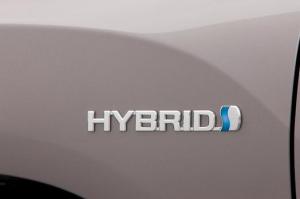 Toyota Highlander Hybrid
Toyota Highlander Hybrid
As noted above, the big news regarding the 3rd-generation of the Toyota Highlander Hybrid is the shift in sourcing from Japan’s Kyushu facility to the Toyota Motor Manufacturing Indiana, Inc. (TMMI) plant in the U.S. This makes it the first Toyota hybrid to be built in the Hoosier state.
We suspect that the 2.5-liter, 4-cylinder 2AR-FXE hybrid gasoline-electric powertrain from the current Camry, Avalon and Lexus ES would be marginal in the bulkier and heavier Highlander, but would an extra 178cc, 8 hp and 15 lb/ft of torque make the difference? Those are the approximate benefits from hybridizing the current base Highlander’s slightly larger 1AR-FE 2.7-liter four to create an Atkinson cycle hybrid 1AR-FXE. Useful as they may be, though, we suspect that the next Highlander Hybrid will carry on with the current 2GR-FXE 3.5-liter V6 hybrid powertrain.
Given all this emphasis on U.S.-only sourcing, we expect the latest Highlander to join the Avalon and RAV4 EV in having an American chief engineer.
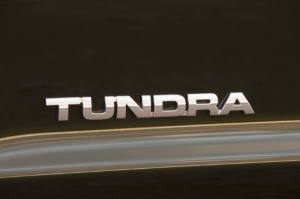 Toyota Tundra
Toyota Tundra
The current, 2nd-generation of the space shuttle-towing Toyota Tundra full-size pickup truck made its debut at the February 2006 Chicago Auto Show. Since then, it has seen a minor facelift coupled with the replacement of the “middle option” 4.7-liter 2UZ-FE V8 engine with the newer, more powerful yet more economical 4.6-liter 1UR-FE V8 for the 2010 model year. We expect its latest version to debut 7 years later, during the Thursday 7 and Friday 8 February media preview for the 2013 Chicago Auto Show.
By most accounts, don’t expect a totally new, 3rd-gen Tundra to emerge. Rather, we should expect to see something akin to the extensive second facelifts applied to the 3rd-generation (XX30) Toyota Avalon in April 2010 for the 2011 model year; or to the 4th-generation (XF40) Lexus LS for the 2013 model year. Or, in the words of Motor Trend
…a source confirmed to us that the Tundra’s updates will be purely aesthetic and quite minimal – don’t expect to see any updates to the truck’s powertrains.
This is partially contradicted by Mark Rechtin of Automotive News‘ predictions dating back to last August:
Toyota will call (the spring 2013 re-engineering) a full redesign, but the V8 powertrains and suspension will remain the same, and the ladder frame dimensions won’t change much…
Expect Toyota to start pushing the 4.0-liter V6 version hard for corporate average fuel economy reasons, using direct injection to boost horsepower from its current 270 to more than 300. A larger fuel tank will increase range. Expect more “trucky” styling.
Finally! A long-overdue 1GR-FSE direct-injected 4-liter V6. We wonder if it will feature dual (D4-S) direct+port injection or go direct injection-only like the 2.5-liter 4GR-FSE V6. And would a V6 that powerful threaten to make the small 4.6-liter V8 redundant?
In comparison to the recent activity surrounding Detroit 3 full-size pickup trucks, then, expect something more akin to the 2013 Ford F-150 and Ram 1500 refreshes than an all-new generation like the upcoming 2014 Chevrolet Silverado and GMC Sierra.
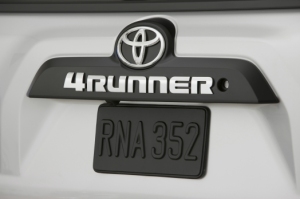 Toyota 4Runner
Toyota 4Runner
The 5th-generation 4Runner was unveiled at the Texas State Fair on 24 September 2009, for the 2010 model year. Thus, it is due for a mid-life refresh for the traditional autumn 2013 kickoff of the 2014 model year. Primarily focused around new headlights, taillights, front grille inserts, exterior colors and interior tweaks, there may nevertheless be one significant change if Mark Rechtin’s Tundra prediction noted above holds true: the addition of direct (or dual direct+port) injection to the current 4-liter 1GR-FE V6 to create a 1GR-FSE successor.
Its overseas Toyota Land Cruiser Prado fraternal twin and its upmarket Lexus GX 460 derivative should similarly see a minor facelift, the latter becoming the latest Lexus to receive the signature spindle grille.
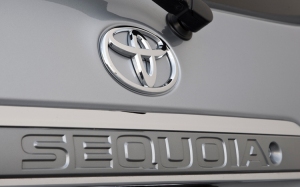 Toyota Sequoia
Toyota Sequoia
Where the Toyota Tundra goes, its Sequoia full size sport utility vehicle offshoot soon follows. Although not explicitly mentioned in the latest round of “new Toyota” predictions, the suggestion of a 2014 model year “re-engineering” by Rechtin would imply a Tundra-like makeover to appear no later than the 2013 Los Angeles Auto Show press previews on Wednesday 20 and Thursday 21 November. For reference, the 2nd-generation Tundra made its public debut at the February 2006 Chicago Auto Show but did not go into production until a full year later, on February 2007. In contrast, the 2nd-gen Sequoia first appeared at the November 2007 Los Angeles Auto Show but went into production the following month. Thus, our prediction is not particularly far-fetched.
Given that the Sequoia is probably too large and heavy for even an upgraded 1GR-FSE V6, don’t expect much more than a revised front end, taillights and wheels, with a couple of new exterior colors and some interior tweaks thrown in for good measure.
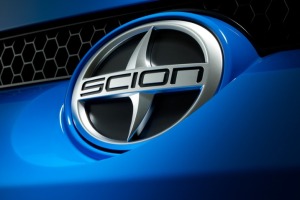 New Scion hatchback (xD successor?)
New Scion hatchback (xD successor?)
Historically, Scion’s two 5-door hatchback offerings have marched together in lockstep. The original 2004 xA and xB debuted at the Los Angeles Auto Show on 2 January 2003 and both went on sale together, starting with 105 Toyota dealerships in California on 6 June of that year. Their successors, the xD and the 2nd-generation xB were both unveiled on 16 December 2006 at an invitation-only, no-camera event in Miami, Florida, followed by their joint public reveal on 8 February 2007 at the Chicago Auto Show. Soon thereafter, however, each went their own way. The xD went on sale in early August 2007 and soon settled into a routine groove of traditional late summer/early fall (between August and October) annual model changes. In contrast, the larger 2nd-gen xB was all over the map…er…calendar when transitioning from one model year to the next. After its debut in early May 2007 (3 months ahead of its xD sibling), it followed a March/April pattern for release of the following model years until 2011, when the 2012 xB was pushed back to July (thus creating a 16-month 2011 model year). Another 16-month (if not even longer) 2012 model year is in store, given that the 2013 model year xB, in Scion’s words, “will begin arriving in dealerships early next year” (the 2013 calendar year).
In light of this, we’re going to agree to disagree with Mark Rechtin’s contention that replacements for both the xB and xD will be introduced at the New York Auto Show in March. Would Scion really replace the xB so soon after the 2013 model goes on sale? We’ll stick out our necks and say no, and suggest that Scion’s 10th-anniversary festivities will only include a single new model, and that the xD will be discontinued before the xB. We will agree, though, that we’ll likely see several new Release Series special editions during 2013 to celebrate 10 years of Scion. (This author will be rooting for an admittedly unlikely long-shot larger-engined, manual transmission Scion iQ micro-hot hatch).
Toyota’s traditional veil of secrecy becomes even more impenetrable when trying to figure out what the future holds for the Scion model range. Back in April, a teaser for a subscriber-only WardsAuto article quoted then-Scion vice president Jack Hollis as saying
We don’t have plans for a direct xB or xD replacement…Harkening back to the original brand tenet of “one-and-done” models, Scion won’t carry over the names of the xB and xD
Soon, the notion of rebadged Daihatsu models as part of the future of Scion took hold, and Mark Rechtin, in the latest iteration of his annual “future of Scion” predictions for Automotive News and AutoWeek agreed, suggesting that
There has been talk of reconfiguring the boxy, 100-inch wheelbase Daihatsu COO/Materia (a.k.a. Toyota bB), which is closer in size and design to the original xB that defined the Scion brand.
Because of the xD’s tepid sales, Scion is rethinking its entry in the segment. We may see something more like the Ractis mini-minivan from the Japan market. The new xD (successor) likely will arrive in the fall of 2013.
Other possibilities
In spite of having more clues and hints than ever, there is still an unexpected level of uncertainty hanging over these predictions. Does the Toyota RAV4, with a public reveal in November 2012 but an early 2013 start-of-manufacture and sales date truly belong on last year’s predictions list or on this one? Is Mark Rechtin right about 2 Scion debuts for 2013 versus our prediction for a single one? Is Toyota counting the Highlander as one entity this year as opposed to last year’s counting of hybrids and non-hybrid versions separately?
Speaking of hybrids, a number of pundits, such as Auto Express, Green Car Reports and WardsAuto have wondered about the possibility of a gasoline-electric RAV4. Auto Express quotes RAV4 Deputy Chief Engineer Yoshikazu Saeki as saying that
…a hybrid “would not be difficult to do. We are watching the market. After introducing the new RAV4 we will see. There will be a possibility of introducing a hybrid RAV4 and we will respond to what the market wants.”
while WardsAuto cites Toyota U.S.A vice president-marketing Bill Fay as saying that
A hybrid version of the RAV4 is possible, but not now. You never know what’s down the road, but nothing short-term.
Perhaps Toyota sees some overlap between the Prius v and a RAV4 Hybrid, even though the former is longer, lower and narrower than the new RAV4. Also, unlike RAV4, Prius v is unavailable with all-wheel-drive. Or is Toyota, in a sense, borrowing from the Ford playbook that saw it abandon the Escape crossover SUV hybrid in favor of a front-wheel-drive only C-Max Hybrid tall wagon?
The initial draft of this article had a 2014 model year mid-term facelift for the 3rd-generation Toyota Sienna not-so-minivan in place of the Sequoia, given that the outgoing Highlander got one after 3 model years. The current Toyota Venza, Tundra and 4Runner mid-life refreshes, on the other hand, didn’t happen until after the 4th model year, Thus, we walked away from that prediction.
Finally, my esteemed colleague Flipside909 keeps insisting on how long overdue the Tacoma not-so-compact pickup truck is for a new generation. To which Mark Rechtin (again?!) of Automotive News replies:
The Tacoma soldiers on until a fall 2014 redesign that is required for safety and emissions standards.
Ahhh…then we can start our 2014 calendar year predictions list with a Sienna facelift and a new-generation Tacoma…

